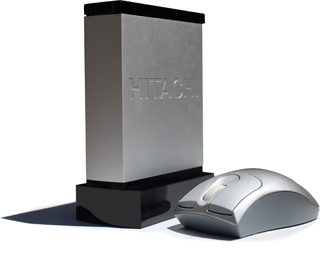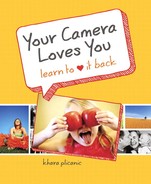Chapter 12. Back It Up Ya’ll!: Automation is your friend
Like the flowers that magically bloom year after year, backing up your data needs to be a regular (and automatic) occurrence.
It goes without saying that backing up your digital life is a good idea. As the expression goes, “It’s not a question of if your hard drive will fail, but rather, when.”
The problem is that most people put it off—if they do it at all—which obviously defeats the whole purpose. Like preparing your taxes, taking the recycling out, or investing in your 401(k), backing up your data is something that just needs to be done.
The key is to automate the process so that once you get it set up, the backups will take care of themselves—and you can focus your attention on more exciting things. (Now, if only preparing taxes and taking the recycling out could be equally self-sufficient...that’d really be something!)
External hard drives
External hard drives make it easy to duplicate the contents of your entire computer so that all your data (not just your photos) will be safe in the event that your system fails. They’re small (Figure 12.1), easy to set up, and available at any computer or office supply store.
Figure 12.1. This 2 terabyte external hard drive makes it easy to keep all my most critical files backed up (and it cost less than $150). It’s shown here next to a mouse for size comparison.

The backup drive you choose should be equal to, or larger than, the capacity of the hard drive you’ll be backing up. So if you want to back up a 1 terabyte internal hard drive, you’ll need at least a 1 terabyte external hard drive to fit everything on. Drives are getting less and less expensive every day, so it’s reasonable to expect to find one that suits your needs for $50–$150 (or even less).
Backup software
Once you have an external drive to back up your data to, you’ll need software to make it run on auto-pilot. The drive you choose may come with backup software included, but if it doesn’t—or if you’re not a fan of what it comes with—you can always take advantage of what’s already on your computer. The current versions of both Windows and Mac operating systems include built-in backup applications:
• On Windows, find it by going to the Start menu and typing “Backup and Restore” into the search field. (If you don’t get any results, search again using just the word “Backup.”)
• On a Mac, the backup application is called Time Machine, and you can find it at Finder > Applications > Time Machine.
Whichever platform you’re on, you’ll have the opportunity to specify a backup location (the drive you want the backup data to be stored on), as well as set a schedule for how often and at what time you want the backups to occur. For best results, consider backing up your system on a daily (or even hourly) basis.
Figure 12.2 shows the Mac Time Machine interface. The software backs up your system on an hourly basis, which can be extremely handy not only in the case of a hard drive failure, but also in the event that you delete a file by mistake, or accidentally save one file over another (who hasn’t done that at least once?). If hourly seems to slow down your computer, you can create manual backups whenever you want. (Unfortunately, those are the only Time Machine options—automatic hourly or manual on demand.)
Figure 12.2. Backup software, such as the Mac’s Time Machine, is simple to use and makes file recovery a breeze.

Keep in mind that the initial backup of your data will take substantially longer than regular maintenance backups (because it’s the first time all the information is being transferred). After that, the software is smart enough to know which files have been changed or added since the last backup, and only those files are backed up.
Third-Party Solutions
As any Google search will quickly confirm, the list of backup solutions available is pretty extensive. You can try out some applications for free before making a purchase. Key features to look for include:
• Easy setup
• Easy recovery
• Automation with scheduling options that fit the way you live/work
• Support in case you need help or have additional questions
Windows users may want to check out: Genie Timeline Home (http://genie-soft.com)
Mac users may be interested in: Chronosync (http://econtechnologies.com)
The most important thing is that you get started—today.
When the Unthinkable Happens
Whatever you do, don’t attempt data recovery on your own without talking to a professional first—or you could make things worse, reducing your chances of a successful recovery.
The team at DriveSavers (www.drivesaversdatarecovery.com) is among the best of the best. Their heroic data recovery specialists can be reached at 800-440-1904 and are great at explaining your options and helping you understand your chances of getting your digital life back.
But be prepared, it could cost you a very pretty penny. I once had a memory card recovered and it cost me upward of $1200 (even with a professional discount). Even though my experience with DriveSavers was phenomenal, I couldn’t help but agree when my recovery hero said, “We hope you never have to call us again.”
Online backups
If the idea of setting up an external hard drive has your stomach in knots, or if you want a second layer of protection—even an external hard drive won’t protect your data if your computer is stolen or destroyed—an online backup system might be a good match for you.
Online backups operate much the same way as external hard drives, except that your data is backed up to a remote storage system via the Internet. No drives for you to buy, no additional hardware on your desk, and total peace of mind.
Companies such as Mozy (www.mozy.com), Carbonite (www.carbonite.com), and Backblaze (www.backblaze.com) make online backups ridiculously easy and affordable by offering encrypted backups of your personal computer starting at less than $60 per year. That means, not only is your data backed up, it’s kept private.
The only catch is that you need a reliable, high-speed Internet connection. If you live in an area with slow Internet, this may not be a viable option.
What about CD/DVDs?
Using CDs or DVDs to transfer files or make a slideshow for your cousin’s wedding is one thing. But when it comes to keeping your data safe and current, burning CDs or DVDs isn’t practical for several reasons:
• There’s no way to automate the process. The discs only get burned when you take the time to sit down and do it. (Don’t kid yourself. Automation is a must!)
• CDs and DVDs are not high-capacity storage devices. The memory card in your camera likely holds more data than you could fit on one of these discs (even a dual-layer DVD only holds about 8 gigs of data). That means you may have to burn multiple discs each time you’re ready to back up another memory card (not to mention having to figure out a way to label, sort, and store them all).
• Reports vary, but some experts say CDs and DVDs may only be readable for approximately five years, making them a poor choice for long-term archival purposes.
Bottom line? Burning discs is generally not a viable or sustainable backup solution. Invest in an external hard drive and/or online backup solution instead.
Chapter snapshot
![]()
With so many easy and inexpensive backup options out there, there’s literally no excuse for not protecting yourself. The sooner you get set up, the sooner you can start sleeping better at night.
• Automating your backup system is key.
• You can back up to an external hard drive using the software that comes with the drive itself, the backup application that comes with Windows or Mac, or a third-party solution.
• Online solutions offer an additional layer of protection by storing your data on a remote drive via the Internet.
• Don’t be a download slacker! The sooner your get your images off your memory card and into long-term storage, the better off you’ll be.

